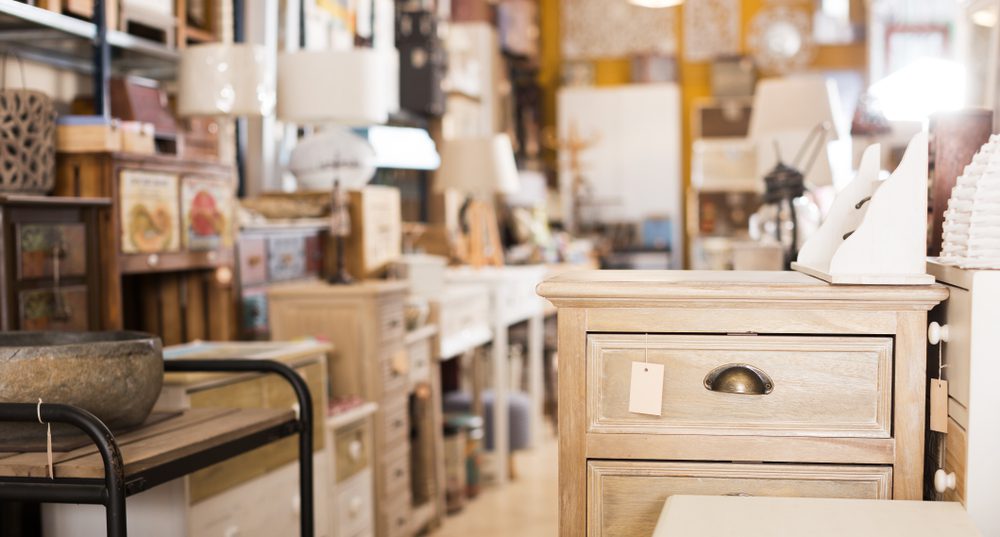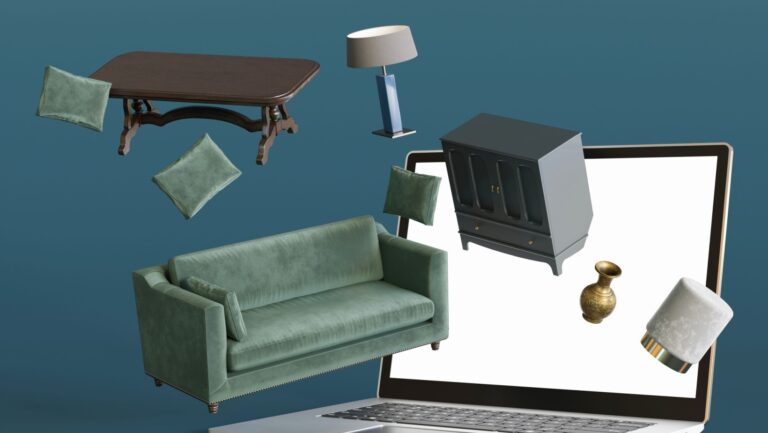When Furniture Stops Moving, It’s Time to Rethink Your Floor
Tariffs are driving costs up. The pandemic redecorating rush is over. If you’re looking around your showroom, wondering where the traffic went—and noticing your turns slowing while your warehouse fills up—you’re not alone. This is the new normal.
The question is: what are you doing about it?
Wary shoppers aren’t rushing in to buy a couch on sale anymore. They need a reason they walked through your doors instead of scrolling online. They need to see the whole picture of a new room, not just individual pieces with price tags. That’s where merchandising stops being optional and starts being survival.
According to Contravision’s analysis of visual merchandising data, shoppers spend 20% more time in stores with strong visual merchandising and are 73% more likely to return to those stores. More time in-store means more opportunities to sell, and return visits mean loyal customers. Both mean you’re not racing to the bottom on price.
Retail Merchandising Isn’t Decoration—It’s Strategy
Merchandising gets confused with “making things look nice.” That’s not it. Merchandising is about removing friction from the buying decision. It’s about helping shoppers see what they want before they know they want it.
When shoppers walk into a cluttered showroom with too many SKUs and no clear path, they freeze. Too many choices create paralysis, not purchases. They leave without buying, and worse, they don’t come back.
When furniture sits too long, it’s like fabric that fades in the sun—it loses appeal and value until you’re forced to mark it down or clear it out. Merchandising prevents that by moving products faster and at better margins.
Your job isn’t to carry every option. It’s to curate the right options and present them in a way that makes shoppers relax, imagine, and buy.
What a Merchandising Plan Actually Includes
If you compete in this market, you need more than good taste. You need a system. A real merchandising plan includes:
Store layout: How traffic moves through your space matters. Shoppers naturally move counter-clockwise. Your layout should support that, not fight it. Place your checkout where it doesn’t create friction between browsers and buyers.
Department planning: Your displays should change with the seasons and holidays. If your floor looks the same in March as in October, shoppers assume your inventory is stale.
Budget for fixtures and props: Lighting draws eyes. Signage answers questions before they’re asked. Props help shoppers imagine your furniture in their homes. Budget for these or your merchandise sits in shadows.
Merchandise planning system: This is how you maximize turn, limit out-of-stocks, increase margins, and minimize markdowns. Without it, you’re guessing.
Open-to-buy and predictive analytics: You need to know what variety to offer without overbuying. Analytics tell you what’s moving and what’s not before it becomes a problem.
Start at the Front Door
Shoppers form an opinion about your store in seconds. That opinion starts at your entrance.
Directional signage: Newcomers hate asking where things are. Make navigation obvious. If someone has to hunt for bedroom furniture, they won’t.
Lighting: People shop in bright, energetic spaces, while dim showrooms feel depressing. If your lighting hasn’t been updated in five years, it shows.
Visual barriers between departments: Large stores feel overwhelming. Use backdrops or barriers to create intimate spaces that draw shoppers in. Make those barriers interesting enough to pull people deeper into your store.
Accessory displays: Accessories are silent salespeople. A well-staged vignette shows how a lamp, rug, and throw pillows complete a room. That’s how you lift the average ticket without pushing.
Signage that intrigues: Well-placed, well-worded signs answer questions and entice shoppers to touch, hold, or imagine. Bad signs just state the obvious or get ignored.
The Advantage You Have Over Online
There’s nothing in your store that shoppers can’t buy online. They know this, and you know this.
So why do they drive to you?
Because they expect more than a website can deliver, they want to sit on the couch, feel the fabric, and see the scale in person. They want inspiration and answers. If your showroom doesn’t provide that, you’re just a showroom for Amazon and Wayfair.
Merchandising is your edge. It’s how you create an experience online that competitors can’t replicate. A curated vignette that helps someone imagine their living room. Lighting that makes a dining set look like something worth investing in. Signage that tells a story instead of just listing features.
When you merchandise well, shoppers don’t notice the work. They just know they like being in your store. They stay longer. They come back.
You’re Always Working on Three Things
Merchandising isn’t static. You’re always managing three timelines: the current promotion, the upcoming one, and the review of what just ended.
Create a full-year calendar: Mark holidays, seasons, local events, and promotions. Plan your floor changes around those dates. If you’re scrambling to merchandise for Memorial Day the week before, you’ve already lost sales.
Who Does the Work?
Large retailers have teams: visual merchandisers, buyers, and analysts. Independent retailers don’t have that luxury.
But you still need someone who understands what’s trending, which colors are moving, and why some products fly while others sit. You need someone who can create the feeling of discovery when a shopper walks in.
If you don’t have that person, your merchandising suffers. And when merchandising suffers, turns slow down and margins shrink.
The time required varies depending on the number of SKUs, the size of the displays, and how easily you can move fixtures. But the work has to happen. Getting merchandise out and priced isn’t enough anymore.
What This Really Comes Down To
Merchandising defines your shopping experience and reinforces your brand. A well-planned showroom tells a story. It guides customers through spaces that make them imagine your products in their homes.
It’s the connection between your brand and their purchase decision. When layout, lighting, signage, and product presentation work together, browsing becomes buying, and visitors become customers.
When every display and vignette supports a clear strategy, your store doesn’t just sell furniture. It sells an experience that shoppers can’t find online.
In a market where everything costs more and shoppers are more cautious, that experience keeps you in business.
If you’re looking to master retail merchandising, there are several degree programs where you can deepen your knowledge, critical thinking, and skills. Bob Phibbs has a whole course on in-store merchandising in his online retail sales training program, SalesRX.com.












